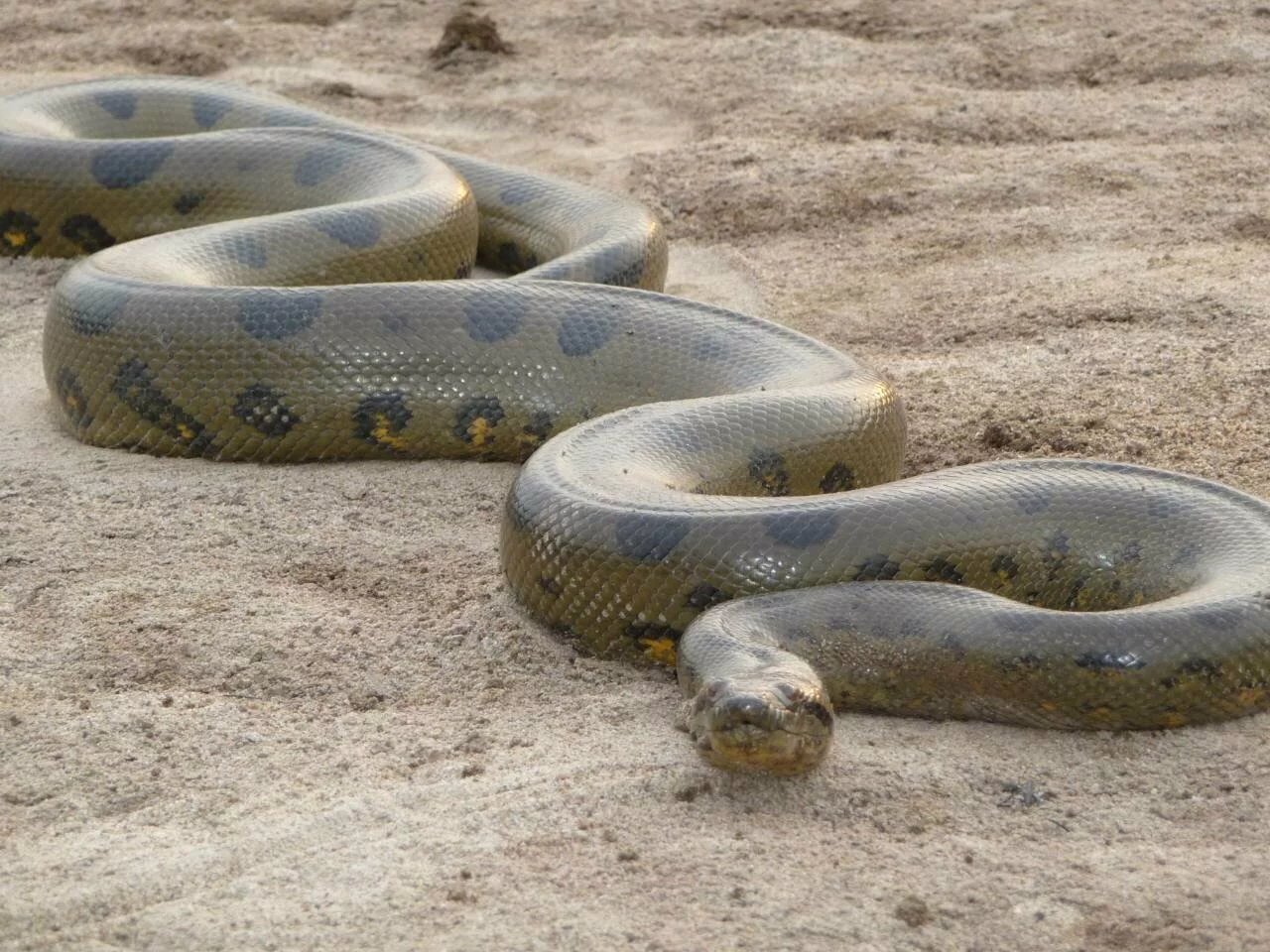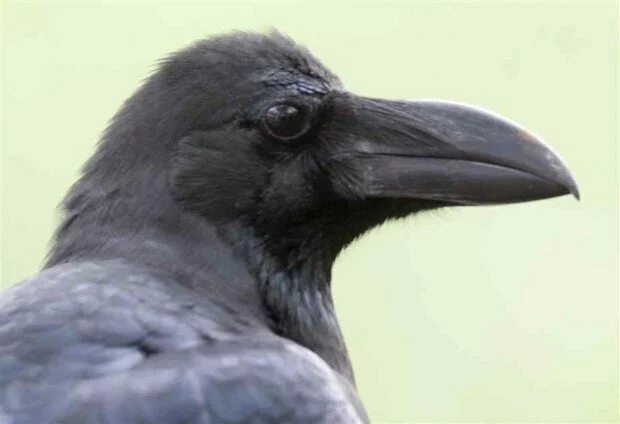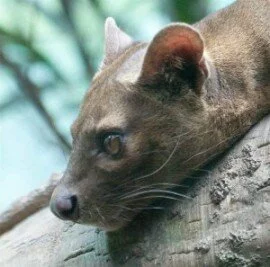Mighty Constrictor of the Amazon: The Green Anaconda
The tales are well known. Stories of giant serpents capable of crushing a man’s bones with their coils and devouring him whole have been passed down for many generations. The creatures most commonly specified in these stories are the massive green anacondas (Eunectes murinus) of South America. Though the stories are commonly exaggerated, one look at these intimidating reptiles and one cannot help but to understand why these tales originated in the first place. Though anacondas are certainly no monsters, they are mighty apex predators capable of growing to great sizes and overpowering other large animals. They are masters of disguise, disappearing under the water’s surface and moving silently across the swamps. They thrive in a hostile world where piranhas, crocodilians, jaguars, and other formidable predators reside. Once full grown, they are capable of attacking and killing nearly any creature present in their habitat. On occasions, even humans have met their end in the coils of this large reptile. Unfortunately, their capabilities and hunting prowess have also earned them a killer’s reputation similar to that of sharks, bears, and other predators. However, those who study anacondas know them for what they really are: extraordinary reptiles which demand great respect. They are a combination of beauty and danger, a fascinating creature to study.
The green anaconda is the largest member of the Boidae family and one of the largest of all snake species. The species occurs throughout the Amazon rain forests and Orinoco basins, usually living in marshes, swamps, and calm streams.[1] It is a very bulky snake which can grow up to 20 feet in length and weigh around 200 lbs (females are much larger than males), though larger specimens have been reported. It is a dark green snake with black oval spots running throughout its body. The spots on the side of its body tend to have yellow centers. The eyes and nostrils are located on the top of its head to allow the snake to submerge most of its body and still breathe and see out of the water, a very useful hunting tactic that is also employed by crocodilians. Although they are mainly nocturnal, anacondas will also hunt during the day.
So how exactly do anacondas hunt their prey? They simply sit and wait for food to swim or walk by. The snake then lunges at its target and bites onto it. Afterwards, it coils itself tightly around the victim. With nowhere to escape, all the prey can do is struggle. Each time the prey breathes out, the snake tightens its grip. This makes it more difficult for the victim to take in oxygen. After some time, asphyxiation kills the prey animal. Occasionally, large snakes like anacondas exert so much pressure on their prey that the victim actually dies of internal bleeding due to the rupturing of several blood vessels that cannot withstand the pressure! This is especially so with smaller animals. Being hunted by a large constrictor is certainly not a fun way to go. The most amazing event, however, occurs after the anaconda has killed its prey. The snake distends its jaws, allowing the prey to fit into its mouth, and begins to slowly work the meal down its esophagus. After the long process has concluded, the snake must then find a safe hiding area to digest its food in peace. Depending on the size of the meal, the digestion process may take anywhere from 2 days to almost a week. Being a powerful ambush constrictor, the anaconda has no need for and lacks venom. However, its bite can still lead to a deadly infection. The bite itself is also very painful, as the anaconda possesses numerous sharp teeth which are curved backwards to ensure that struggling prey do not escape the snake’s hold.
Speaking of prey, what exactly does a green anaconda eat? Well, whatever animal it can wrap its coils around. This includes deer, wild pigs, birds, large rodents, tapirs, capybaras, peccaries, sheep, dogs, caiman, and occasionally even jaguars; among other creatures (large caiman species and adult jaguars will also occasionally hunt anacondas).[2] Anacondas have also been known to attack humans, but these attacks are, despite the myths, very rare.
The green anaconda’s reproductive behavior is very interesting. Once the rainy season arrives, females will release a pheromone trail or airborne stimulant that allows males to track her down. Snakes can sense chemicals in the air by flicking their tongues repeatedly (this is sometimes referred to as “tasting the air”), so it is not very difficult for male snakes to find the female.[3] It is not unusual for a group of males to find a lone female. When this happens, a breeding aggregation (usually called a breeding ball) results. The males all wrap around the female in an attempt to mate with her. The males do not act very aggressively with each other, simply pushing each other away as each male tries to successfully mate with the female.[4] It can be difficult for some males to find the female in this confusion and the whole process can take 2-4 weeks to conclude.[5] However, a male eventually manages to find the female and successfully copulates with her. Patience is definitely a virtue for these snakes. The female’s gestation period (or length of pregnancy) lasts between 6 and 7 months.[6] Interestingly enough, the eggs produced by the mother will actually hatch inside of her, resulting in her actually giving birth to live young.[7]
Life for a baby green anaconda can be difficult and short, as they are preyed on by a great number of animals. This holds true for basically all reptiles. These babies grow quickly, however, and reach sexual maturity within their first few years (though growth slows down after this point).[8] The few that survive will eventually grow to become powerful apex predators much like their parents. A healthy green anaconda can look forward to an average lifespan of 10 years, though some snakes can exceed this age.[9]
For better or worse, anacondas and other large snakes have captivated the human mind for thousands of years. Their great power and ambushing skill earn them a high level of respect from some people and demonization from others. However, those who truly understand these great serpents can see the true beauty of their design. Though not the gargantuan, bone-crushing creature that it is made out to be in ancient folklore, the green anaconda is still an incredible apex predator which has succeeded in dominating its natural habitat as well as a fascinating creature to study.
[1] National Geographic Society. “Green Anaconda.” National Geographic.com. Available from http://animals.nationalgeographic.com/animals/reptiles/green-anaconda/. Internet; accessed 29 March 2011.
[2] “Anaconda.” www.animalcorner.co.uk. Available from http://animals.nationalgeographic.com/animals/reptiles/green-anaconda/. Internet; accessed 29 March 2011.
[3] Burton, Maurice and Robert Burton. International Wildlife Encyclopedia, pg. 44.
[4] Rivas, Jesus A.. “Life history and conservation of the green anaconda (Eunectes murinus).” www.anacondas.org. Available from http://www.anacondas.org/research.htm. Internet; accessed 29 March 2011.
[5] “AquaFacts: Green Anaconda (Eunectes murinus).” www.vanaqua.org. Available from http://www.vanaqua.org/education/aquafacts/anaconda.html. Internet; accessed 29 March 2011.
[6] Ibid
[7] National Geographic Society. “Green Anaconda.” National Geographic.com. Available from http://animals.nationalgeographic.com/animals/reptiles/green-anaconda/. Internet; accessed 29 March 2011.
[8]Soomro, Adil (2001). “Eunectes murinus“. University of Michigan Museum of Zoology (Animal Diversity Web). http://animaldiversity.ummz.umich.edu/site/accounts/information/Eunectes_murinus.html. Retrieved 2008-10-10
[9] “Green Anaconda.” www.seaworld.org. Available from http://www.seaworld.org/animal-info/animal-bytes/animalia/eumetazoa/coelomates/deuterostomes/chordata/craniata/reptilia/squamata/green-anaconda.htm. Internet; accessed 29 March 2011.


